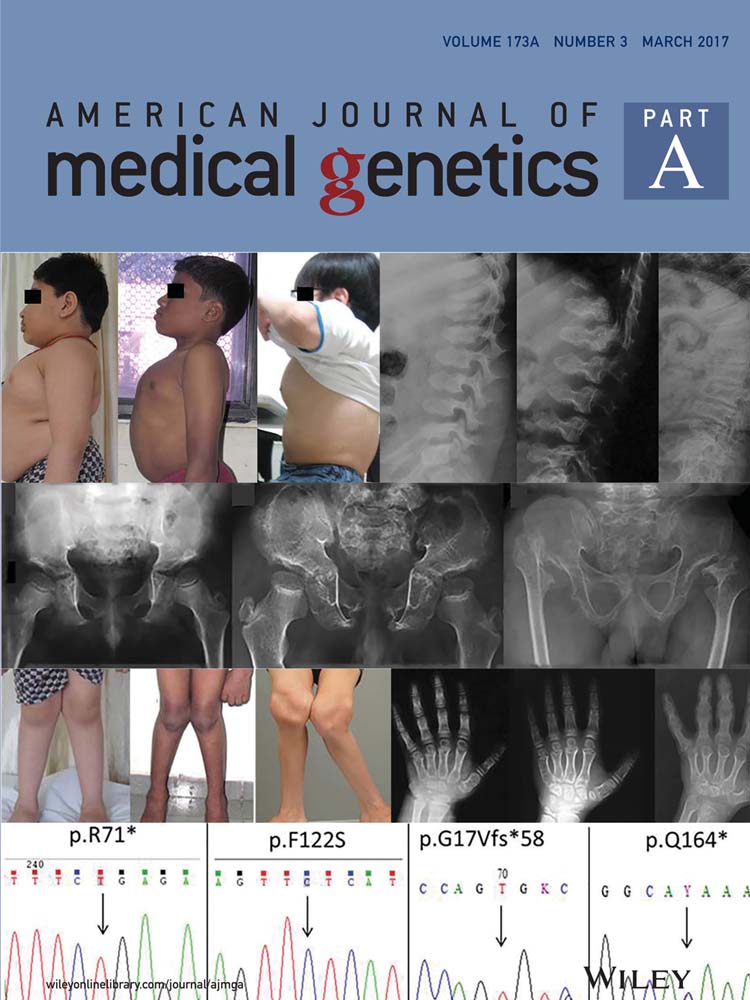American college of medical genetics and genomics updates secondary findings guidelines
Revision adds new genes to testing list, outlines standardized process for including variants on list
Recently revised guidelines from the American College of Medical Genetics and Genomics (ACMG) recommend that genomic sequencing labs should return secondary findings on mutations in 59 genes unrelated to the patient's medical problems that prompted testing.
Published online in November 2016, the guidelines—known as ACMG SF v2.0—update ACMG's 2013 recommendations that targeted 56 genes for sequencing for possible secondary findings. The latest guidelines specify gene variants that are highly likely to cause serious but treatable diseases. The guidelines also newly include the genes BMPR1A and SMAD4, which are associated with juvenile polyposis; ATP7B, which is associated with Wilson disease; and OTC, which is associated with ornithine transcarbamylase deficiency. MYLK, which is associated with familial thoracic aortic aneurysm and dissection, was included on the 2013 list, but was removed in v2.0 (Kalia et al, 2016).
The 2016 guidelines describe a newly developed rigorous process for accepting and evaluating nominations for genes to be included in future lists and future areas of focus for the ACMG working group charged with updating the secondary findings list.
“We are continuing to curate the list so it represents the medically actionable genes,” says the guidelines' co-senior author David Miller, MD, PhD, Director of the Neurofibromatosis Program at Boston Children's Hospital and Associate Professor at Harvard Medical School. “We have a nomination process to get input from the community regarding the ongoing maintenance of the list.”
Guidelines Developed
The ACMG working group considered six genes that had been nominated between March 2015 and March 2016, including the four it added, and one that it removed from the list. The removed gene did not meet a criterion regarding impact on medical management. Each of the added genes received unanimous votes from working group members.
Among the genes in v2.0, 22 of them—including those recently added— can manifest in childhood, notes the guidelines' co-senior author Christa Lese Martin, PhD, Senior Investigator and Director of the Autism & Developmental Medicine Institute at Geisinger Health System in Lewisburg, Pennsylvania.
Although the genes added to the 2016 guidelines came from nominations from ACMG members only, the working group may in the future accept nominations from other professional organizations, such as those for genetic counselors and other clinical specialists, the guidelines note.
In the future, the working group will also consider adding variants that affect individual responses to drugs to the secondary findings list. Although the group has developed a preliminary form for nominating pharmacogenetics (PGx) variants and is developing ways to evaluate their clinical impact, the guidelines note several challenges with returning PGx secondary results, especially lack of evidence based on randomized, controlled trials.
Reaction to Revisions
The senior author of the first version of the ACMG guidelines on return of secondary findings says the update meets with his vision of what they would become.
The lists of genes targeted for secondary findings in the first guidelines and subsequent versions were not intended “to be carved in stone,” says Leslie Biesecker, MD, Chief of the National Human Genome Research Institute's Medical Genomics and Metabolic Genetics Branch.
Dr. Biesecker praised both the involvement of geneticists in nominating new genes and the prospect of other professional groups joining the process. “Making recommendations for secondary findings properly requires enormous breadth of expertise to make a good list. You need the entire community,” Dr. Biesecker says. “These [recent] guidelines are a mechanism for keeping up with that ever-changing knowledge base.”
Benjamin D. Solomon, MD, Managing Director at GeneDx in Gaithersburg, Maryland praised the revised guidelines for establishing a more standardized process for deciding what genes should be included in the secondary findings list. He also applauded the ACMG working group's decision to consider allowing other professions and medical specialties to participate in the nomination process.

Labs that return secondary genomic findings are being encouraged to target additional genes for genetic sequencing.
The inclusion criteria the ACMG working group used are similar to those utilized by the National Institutes of Health-funded Clinical Genome Resource (ClinGen) Actionability Working Group, according to Erica Ramos, MS, CGC, 2017 President-Elect of the National Society of Genetic Counselors and a genetic counselor at the San Diego-based Illumina. Especially useful is consideration of whether a possible treatment is worthwhile, based on its risks and benefits, she adds.
“The odds of positive secondary findings aren't insignificant,” Ms. Ramos adds. About 2% of all samples Illumina tests with genomic sequencing have had secondary findings, she points out.
A recent study from Harvard University researchers reports that between 1% and 1.5% of some 5,000 participants in the European American Framingham Heart Study (FHS) and African-American Jackson Heart Study who had exome sequencing also had secondary findings returned for genes on the first ACMG list (Natarajan et al, 2016).
Indeed, clinical features related to the 56 genes on the first ACMG list were between 4.7 and 6.4 times more common in these heart study participants who harbored pathogenic variants. This finding is important because it comes from patients not known to have diseases caused by genes on the list. In contrast, most study data related to whether genetic variations cause disease comes from research on individuals diagnosed with genetic conditions.
Heart study participants who carried pathogenic variants in genes on the ACMG list had a higher rate of diseases related to those genes than they would be expected to have based on the population risk, says Ms. Ramos. “The variants seem to be disease-causing even though these individuals were not selected based on their personal or family medical history.”
Both the Harvard findings and the new ACMG guidelines show that “appropriate genetic counseling about secondary findings is critical,” adds Ms. Ramos. It should include pretest discussion of the patient's right to opt out of receiving secondary findings and the limits of screening, including how the meaning of secondary findings could change over time.
Ms. Ramos adds that patients with positive secondary findings may need multiple sessions with genetic counselors. “They are getting testing for another health problem,” she notes. “There are things they need to hear immediately and other things to understand later.”




